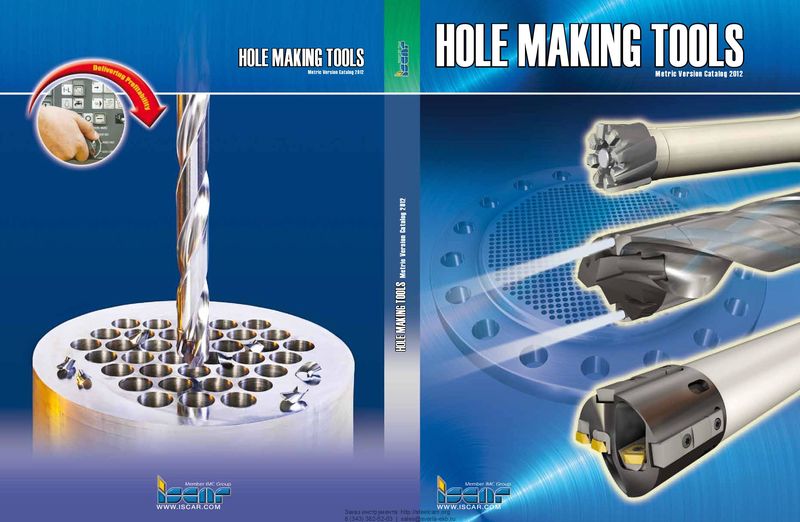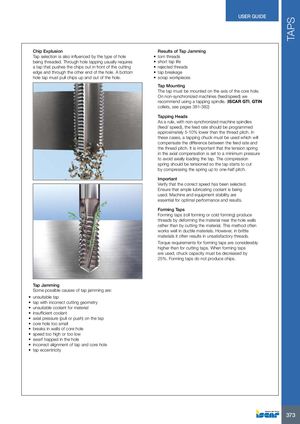Каталог Iscar высокоточные развертки и метчики 2022 - страница 63
Навигация
 Каталог Iscar инструмент для обработки отверстий
Каталог Iscar инструмент для обработки отверстий Каталог Iscar державки и пластины для нарезания резьбы 2022
Каталог Iscar державки и пластины для нарезания резьбы 2022 Каталог Iscar крепление инструмента
Каталог Iscar крепление инструмента Каталог Iscar токарные пластины ISO 2022
Каталог Iscar токарные пластины ISO 2022 Руководство Iscar режущий инструмент в производстве штампов и пресс-форм
Руководство Iscar режущий инструмент в производстве штампов и пресс-форм Каталог Iscar сверла ружейные и для глубокого сверления 2022
Каталог Iscar сверла ружейные и для глубокого сверления 2022 
TAPS USER GUIDE Chip Explusion Results of Tap Jamming Tap selection is also influenced by the type of hole • torn threads being threaded. Through hole tapping usually requires • short tap life a tap that pushes the chips out in front of the cutting • rejected threads edge and through the other end of the hole. A bottom • tap breakage hole tap must pull chips up and out of the hole. • scrap workpieces Tap Mounting The tap must be mounted on the axis of the core hole. On non-synchronized machines (feed/speed) we recommend using a tapping spindle. (ISCAR GTI, GTIN collets, see pages 381-382) Tapping Heads As a rule, with non-synchronized machine spindles (feed/ speed), the feed rate should be programmed approximately 5-10% lower than the thread pitch. In these cases, a tapping chuck must be used which will compensate the difference between the feed rate and the thread pitch. It is important that the tension spring in the axial compensation is set to a minimum pressure to avoid axially loading the tap. The compression spring should be tensioned so the tap starts to cut by compressing the spring up to one-half pitch. Important Verify that the correct speed has been selected. Ensure that ample lubricating coolant is being used. Machine and equipment stability are essential for optimal performance and results. Forming Taps Forming taps (roll forming or cold forming) produce threads by deforming the material near the hole walls rather than by cutting the material. This method often works well in ductile materials. However, in brittle materials it often results in unsatisfactory threads. Torque requirements for forming taps are considerably higher than for cutting taps. When forming taps are used, chuck capacity must be decreased by 25%. Forming taps do not produce chips. Tap Jamming Some possible causes of tap jamming are: • unsuitable tap • tap with incorrect cutting geometry • unsuitable coolant for material • insufficient coolant • axial pressure (pull or push) on the tap • core hole too small • breaks in walls of core hole • speed too high or too low • swarf trapped in the hole • incorrect alignment of tap and core hole • tap eccentricity 373